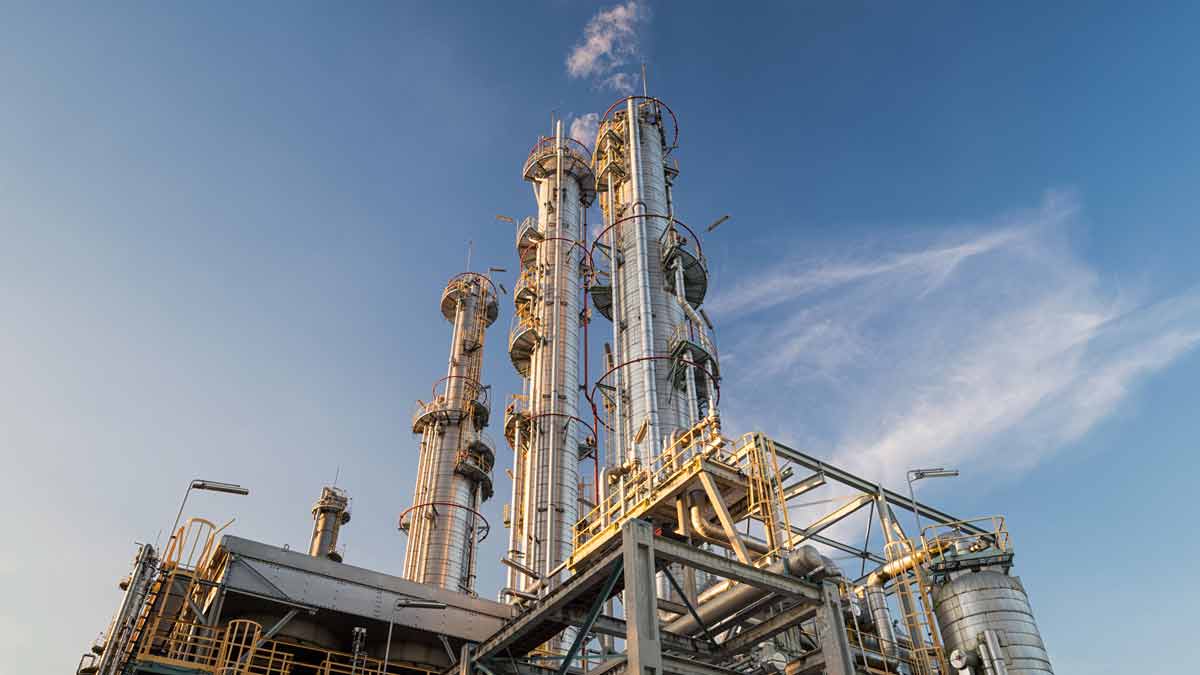The April 26 Husky Energy Superior Refinery explosion which sent 11 people in Superior, WI to the hospital and prompted city and county officials to declare a state of emergency, originated in the fluid catalytic cracking unit (FCCU) -the same piece of equipment identified as the source of the 2015 ExxonMobil Refinery explosion in Torrance, CA which injured two people and endangered 150,000 residents.
Shrapnel from the explosion inside the FCCU at the Husky Superior refinery pierced an asphalt tank and when the leaking asphalt found an ignition source it set off a massive fire, an official from the U.S. Chemical Safety and Hazard Investigation Board (CSB) official told multiple media outlets this week.
When the blast occurred,180 Husky employees and 600 contract workers from CTS Inc. of Wales, WI were inside the facility preparing for a planned shutdown for servicing and inspection. Many of them escaped serious injury because they were on break in “blast shacks” at the time of the explosion. Twenty people suffered explosion injuries including lacerations and penetrating trauma from flying debris. Nine of them were treated at the scene, 11 were transported to area hospitals including one person who sustained “a serious blast injury,” according to a statement from hospital company Essentia Health.
The FCCU will be the focus of the investigation and subjected to a metallurgical analysis that will reveal any cracks or weaknesses that may have caused the unit to fail once CSB investigators can get close to the source of the blast. The CSB has had a four-person team at the site for the last week interviewing witnesses and reviewing evidence, but because the refining units are too unstable to walk around they have not been able to inspect the blast site. Cranes being brought to the site over the last few days will allow inspectors to get into the blast area within the next week, the CSB official said.
Hydrogen Flouride Risk
Superior Mayor Jim Paine ordered the evacuation of everyone within three miles to the east and west of the refinery, two miles to the north and 10 miles to the south, a total of 27,000 people, due to air quality concerns largely posed by a hydrogen fluoride tank at the refinery. Hydrogen fluoride is extremely toxic, breathing it in can cause serious illness, blindness and death. Some refineries use hydrogen fluoride as a catalyst in the production of high-octane gasoline. Husky Superior is one of about 50 refineries in the U.S. that produces high-octane gas using this method.
Using foam and water, Superior firefighters were able to isolate the tank and it did not catch fire. But it was close, the fire burned within 200 feet of the tank. Days after the explosion Superior Mayor Jim Paine and Duluth Mayor Emily Larson called on Husky Energy to stop using hydrogen fluoride at the Superior refinery. United Steelworkers, the union that represents refinery workers nationwide, has been advocating for the industry to phase out the use of hydrogen fluoride since 2009.
Husky Energy Inc., based in Calgary, Alberta has owned the Superior refinery for less than a year. Husky purchased the facility, Wisconsin’s only oil refinery, from Calumet Specialty Products Partners LP for $435 million in cash in August 2017. Husky Superior can process 50,000 barrels of oil per day, most of it originating from Canada and the Bakken region, has two asphalt terminals and 3.6 million barrels of crude and product storage, according to the company’s website.
“The Superior Refinery may be new to the Husky family, but it’s been an integral part of the Superior area for more than 60 years. Husky remains committed to our employees and the community. There is considerable work to be done to understand the cause of this incident and to ensure it does not happen again,” the company said in a statement on its website where it also posted an FAQ about the explosion and an FAQ about hydrogen fluoride.
“HF alkylation is a proven, effective, and efficient technology. About one-third of the refineries in the United States use HF to produce gasoline. Husky takes appropriate precautions and follows applicable regulations and best management practices to ensure the safety of our workers and the public. This includes the use of multiple protection levels for the HF tank,” Husky stated in part of the response to the question why it uses the chemical when other methods are available.
ExxonMobil Refinery Explosion, Torrance, CA
The Husky Superior explosion bears a striking similarity to the February 18, 2015 explosion at the ExxonMobil refinery in Torrance, CA. The Torrance refinery was also preparing for a planned shutdown of equipment for maintenance when the blast occurred. Like Husky Superior, ExxonMobil’s Torrance refinery used hydrogen fluoride to process gasoline which did not ignite but forced the evacuation of tens of thousands of people. And, as with the Husky Superior explosion, the CSB identified the FCCU as the source of the explosion in Torrance. Shrapnel from the blast flying very near to the hydrogen fluoride tank.
The CSB found that explosion occurred due to weaknesses in ExxonMobil’s process safety management system and its use of equipment that was older than its safe operating life.
Pritzker Hageman is among few law firms in the country representing clients injured in explosions. Our lead attorneys for these cases, Eric Hageman and Fred Pritzker have a successful track record with these cases and have secured multiple settlements of more than $20 million for their clients. If you would like to reach them for a free consultation, call toll-free at 1-888-377-8900 or use this contact form. There is no obligation.
News Sources:
http://www.kbjr6.com/story/38065467/hydrogen-fluoride-tank-spared-in-refinery-fire-deadly-chemical-concerns-linger
https://www.duluthnewstribune.com/business/energy-and-mining/4439779-mayors-oppose-hydrogen-fluoride-use-superior-refinery
https://www.publicintegrity.org/2011/02/24/2118/use-toxic-acid-puts-millions-risk
